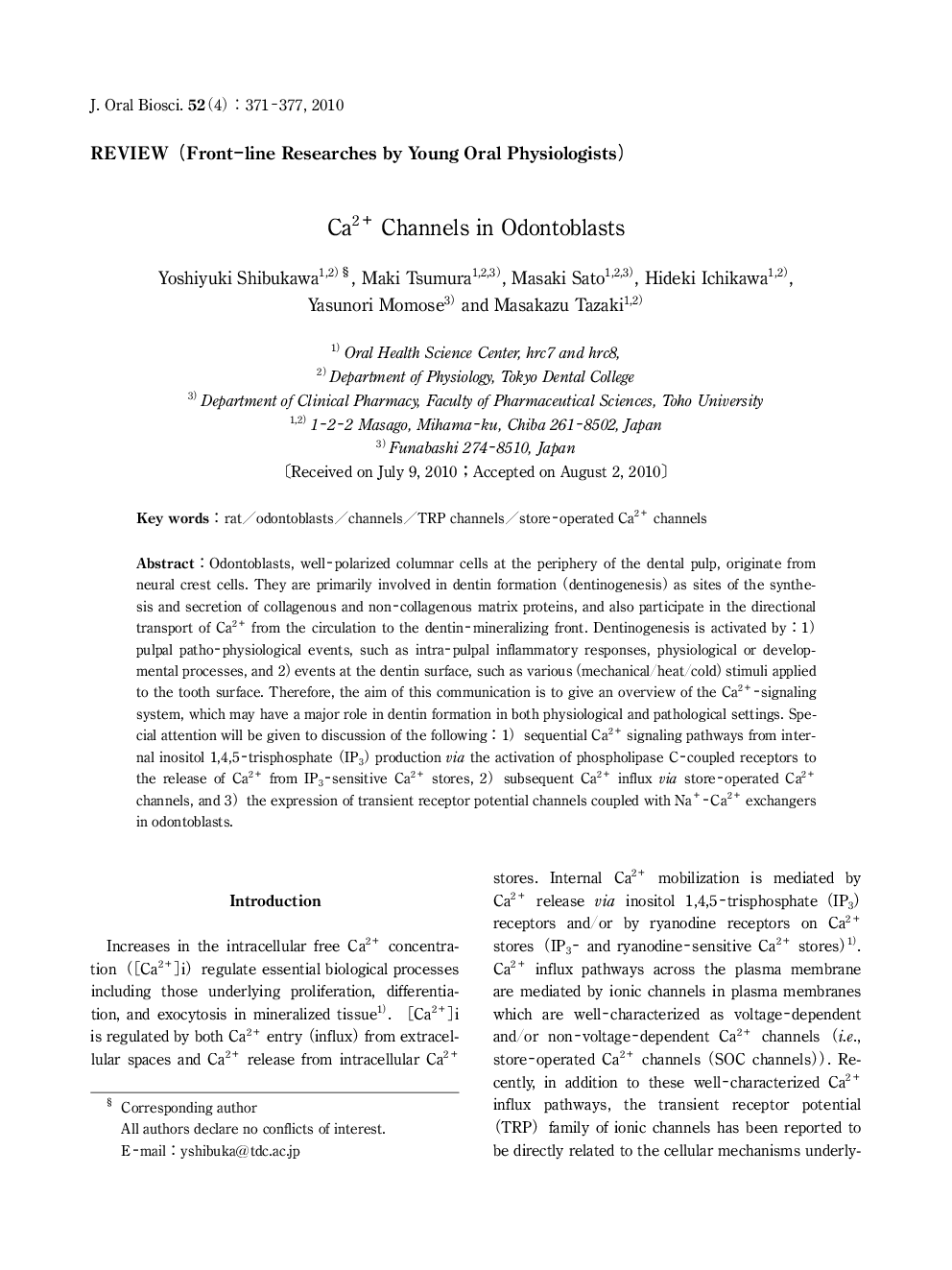| Article ID | Journal | Published Year | Pages | File Type |
|---|---|---|---|---|
| 2776818 | Journal of Oral Biosciences | 2010 | 7 Pages |
Odontoblasts, well-polarized columnar cells at the periphery of the dental pulp, originate from neural crest cells. They are primarily involved in dentin formation (dentinogenesis) as sites of the synthesis and secretion of collagenous and non-collagenous matrix proteins, and also participate in the directional transport of Ca2+ from the circulation to the dentin/mineralizing front. Dentinogenesis is activated by : 1) pulpal patho-physiological events, such as intra-pulpal inflammatory responses, physiological or developmental processes, and 2) events at the dentin surface, such as variousimechanical/heat/coldjstimuli applied to the tooth surface. Therefore, the aim of this communication is to give an overview of the Ca2+-signaling system, which may have a major role in dentin formation in both physiological and pathological settings. Special attention will be given to discussion of the following : 1) sequential Ca2+ signaling pathways from internal inositol 1,4,5-trisphosphate (IP3) production via the activation of phospholipase C-coupled receptors to the release of Ca2+ from IP3-sensitive Ca2+ stores, 2) subsequent Ca2+ influx via store-operated Ca2+ channels, and 3) the expression of transient receptor potential channels coupled with Na+-Ca2+ exchangers in odontoblasts.
